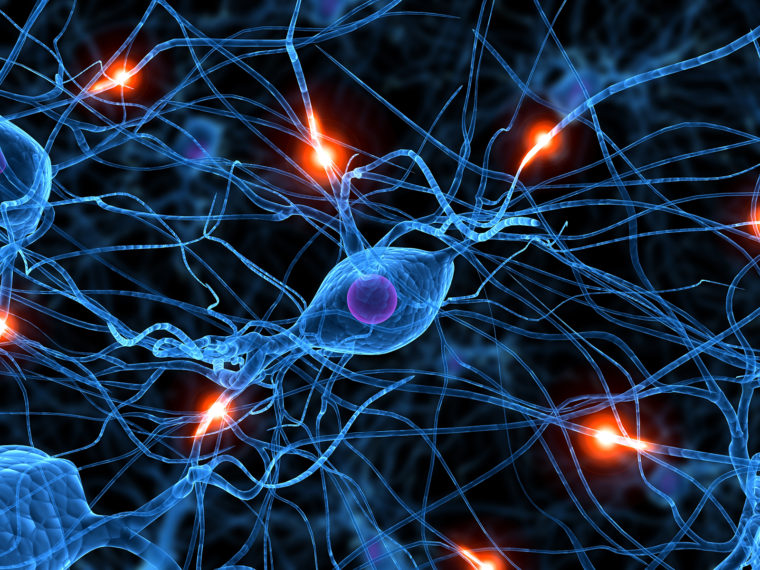Huntington’s Disease is a devastating, fatal, inherited disease that causes nerve cells in the brain to break down over time, and there is no cure.
Rohit V. Pappu, the Edwin H. Murty Professor of Engineering in the School of Engineering & Applied Science at Washington University in St. Louis, has received two grants from the National Institutes of Health totaling more than $4.5 million to study the causes behind this disease that may ultimately provide clues for a treatment or cure.
With $2.84 million in funding over five years, Pappu and his collaborators, Marc I. Diamond, MD, of the University of Texas Southwestern Medical Center, and Ralf Langen of the University of Southern California, will work to mimic profilin, a protein that modulates the clumping together of huntingtin, the gene responsible for Huntington’s Disease when mutated.

“One grant looks at huntingtin from the vantage point of the other molecules in the cell, and the renewal grant is looking at the cellular milieu from the huntingtin side,” Pappu said. “The goal is that you have to look at the same molecule from all sides, and this is what we are doing with huntingtin.
“The central tenet here is that if you know how something works, you can mimic it — it’s a sound engineering principle,” Pappu said.
Profilin sticks to three types of molecules, including stretches of the amino acid proline, which also is encoded by the huntingtin gene, giving the researchers a target for their study. The team will design drug-like mimics of profilin to determine their interaction with the huntingtin gene.
“We are hoping that we can make profilin a better profilin,” Pappu said. “We can use it for mimicry purposes and also as an entity that gives us rules that we can adapt to other proteins that might interact with other aggregation-prone molecules that are implicated in diseases other than Huntington’s, such as Parkinson’s disease and Alzheimer’s disease.”
“The idea is that over our aging process, the regulation or dysregulation of modulatory proteins within cells might be the loss of one of our lines of defense against neurodegeneration that is associated with the clumping of proteins such as huntingtin,” Pappu said.
The work was seeded by a grant that Pappu and Diamond received in 2010 from the Hope Center for Neurological Disorders at the School of Medicine, where Diamond was formerly a professor of neurology and still holds an appointment as an adjunct professor. Pappu said the grant for the pilot program provided the space to ask challenging questions about this complex disease.
“These pilot programs are an important feature of the research ecosystem at Washington University, and they highlight one of the major strengths of this institution — that there are no barriers between the School of Medicine and Engineering,” Pappu said. “They highlight what centers can do in our ecosystems if they have resources.”
The second grant provides $1.67 million for an additional five years to continue studying how the mutations within the repetitive region of huntingtin and its flanking sequences modulate the stickiness of this protein.
“We’ve made some discoveries recently about certain types of species that seem to be smaller and more diffuse through cells. We want to look at how those species come to be, what is their size, and if they correlate with the types of species that have been implicated with neurodegeneration,” Pappu said. “The emerging consensus is that these species are the infectious or toxic agents. Since we’ve made interesting discoveries about spherical phases, we’re focusing on how these species are modulated.”
Pappu said the two grants will help the team build on what it has discovered over the past several years.
“We are also building toward taking those findings and heading in the direction of asking what sort of cellular processes are impaired because huntingtin is sticking to itself,” he said. “That will be the key question necessary to answer to figure out why the stickiness leads to neuronal death. Until we have something that approaches a persuasive answer to that question, finding a cure becomes a tricky proposition.”
